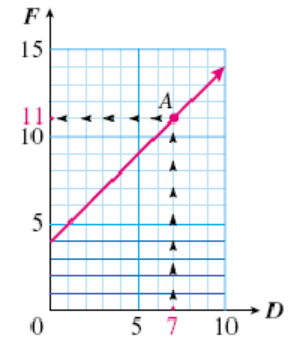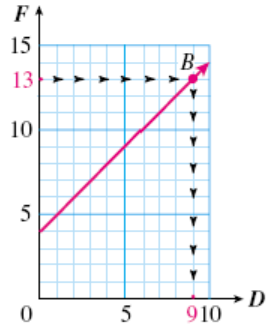Graph of an Equation.
A graph has two axes, horizontal and vertical, and the values for the variables are displayed along the axes. The first, or input, variable is displayed on the horizontal axis. The second, or output, variable is displayed on the vertical axis.




